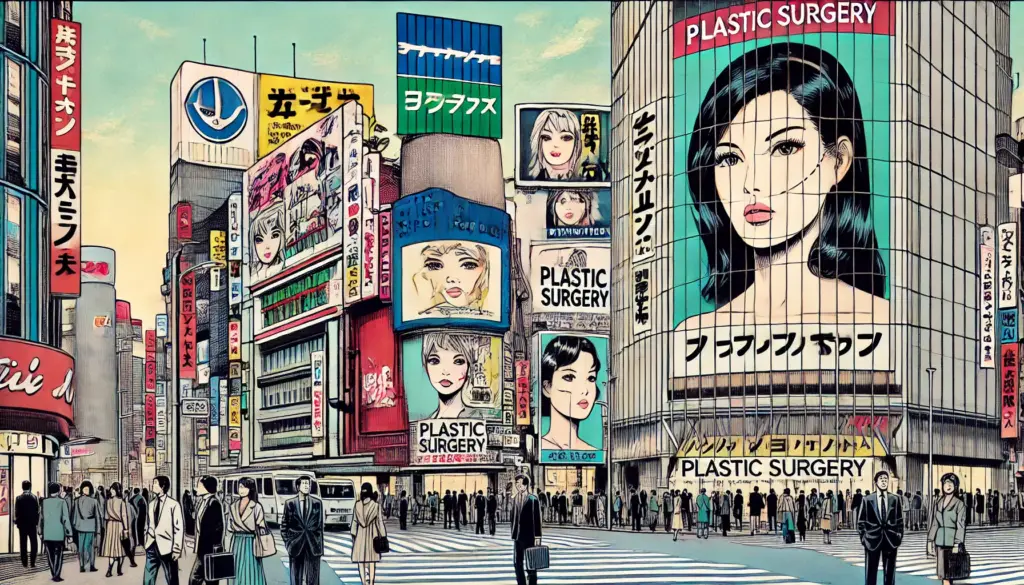
In recent years, Japan’s cosmetic surgery industry has witnessed rapid growth—particularly among women seeking one very specific change: double eyelids. But behind this boom lies a deeper cultural question. Is a single eyelid truly considered “ugly”? Why are more Japanese parents now choosing eyelid surgery for their children? And what does all this reveal about Japan’s shifting sense of beauty?
Let’s take a closer look at the emotional, social, and economic forces driving the double eyelid obsession—and what it means for the future of beauty in Japan 🇯🇵✨
The Rise of Eyelid Surgery in Japan 👁️
Double eyelid surgery, or “futatsu mabuta sekkai” (二重まぶた整形), has become one of the most common cosmetic procedures in Japan. In fact, many clinics now advertise it as a low-cost, lunch-break operation—quick, minimally invasive, and highly accessible.
While once considered a luxury for celebrities or adult women in the entertainment industry, double eyelid surgery has become increasingly mainstream. Some clinics even offer “student discounts” for teenagers, and the age of first-time patients has steadily dropped.
By 2024, several Japanese news outlets reported that more than 70% of cosmetic procedures performed on women under 25 involved eyelid adjustments. It’s not just a trend—it’s a cultural wave.
Why the Obsession with Double Eyelids?
Historically, Japanese beauty standards emphasized subtlety and natural charm. But with the influence of Western and Korean pop culture, preferences have shifted sharply toward bigger, more expressive eyes. In this context, double eyelids are seen as enhancing brightness, femininity, and sociability.
Among the top reasons cited by women for getting the procedure:
- “I want to look more awake and approachable.”
- “People say I look sleepy or angry with monolids.”
- “Makeup doesn’t work well on my eyes.”
- “I’m tired of being teased at school.”
The pressure isn’t only external—many women internalize these ideals from a young age, influenced by TV idols, anime characters, social media influencers, and cosmetic advertisements.
Social Media and Peer Pressure 📱
Apps like Instagram, TikTok, and Japanese platforms like LINE and Twitter have amplified appearance-based competition. “Before-and-after” plastic surgery accounts now attract massive followings, and hashtags like #二重整形 (double eyelid surgery) trend regularly.
Peer pressure is also growing offline. In some high schools, it’s not uncommon for girls to save allowance money specifically for eyelid surgery or use glue and tape to simulate the crease before deciding to go under the knife.
The emotional toll can be significant. Monolid girls often report bullying or feel they must justify their appearance as “unique” rather than “pretty.” In group photos, those with larger eyes may receive more compliments, perpetuating the insecurity.
Parents Getting Involved: A New Ethical Frontier 👩👧
Perhaps the most controversial development is the rise in parents requesting eyelid surgery for their children, sometimes as young as 9 or 10 years old. These cases, while not the majority, have sparked intense debate online and in parenting communities.
Proponents argue:
- “It’s just like correcting teeth with braces.”
- “If it helps boost self-confidence, why not?”
- “Better to do it young so they don’t suffer bullying.”
Opponents warn of psychological damage:
- “Children are being taught that their natural faces are wrong.”
- “What happens if they regret it later?”
- “This is not health care—it’s beauty consumerism.”
In some cases, the decision is made to prepare for school entrance photos or to give children an edge in the notoriously appearance-conscious Japanese job market.
The Business Behind Beauty 💰
Japan’s plastic surgery market has grown to over 200 billion yen annually, with eyelid surgery making up a significant portion. Clinics run aggressive advertising campaigns targeting young women and mothers, often featuring celebrity endorsements and “1-day transformation” packages.
Local governments have so far offered little to no regulation, and unlike some Western countries, there’s minimal psychological screening before cosmetic procedures.
In 2025, several medical ethics groups called for stricter oversight of surgeries performed on minors, but legislation has not yet caught up.
Where Is Japan’s Beauty Consciousness Headed?
At the heart of this issue lies a question bigger than eyelids: What does Japan consider beautiful—and why?
Modern Japanese beauty ideals are increasingly shaped by a mix of global media, economic anxieties, and social conformity. In this environment, personal appearance becomes not just a matter of taste, but a competitive asset.
But some voices are pushing back.
A growing number of activists, educators, and even influencers are promoting “自分らしさ” (jibunrashisa)—the value of authenticity and celebrating one’s natural traits. Hashtags like #ノーメイクの日 (no makeup day) and #一重女子もかわいい (monolid girls are cute too) have gained modest traction.
Still, the dominant narrative remains: double eyelids = success, confidence, beauty.
Final Thoughts 🧠
Japan’s double eyelid boom is more than a cosmetic craze—it’s a mirror reflecting deeper societal tensions around conformity, femininity, and self-worth.
Whether it’s a teenage girl saving up for surgery or a mother guiding her child toward a procedure, each story adds to a broader conversation about how beauty is constructed, sold, and internalized in Japan today.
Will this trend continue to expand? Or will Japan gradually shift toward more inclusive standards of beauty?
Only time—and eyes—will tell.



















































